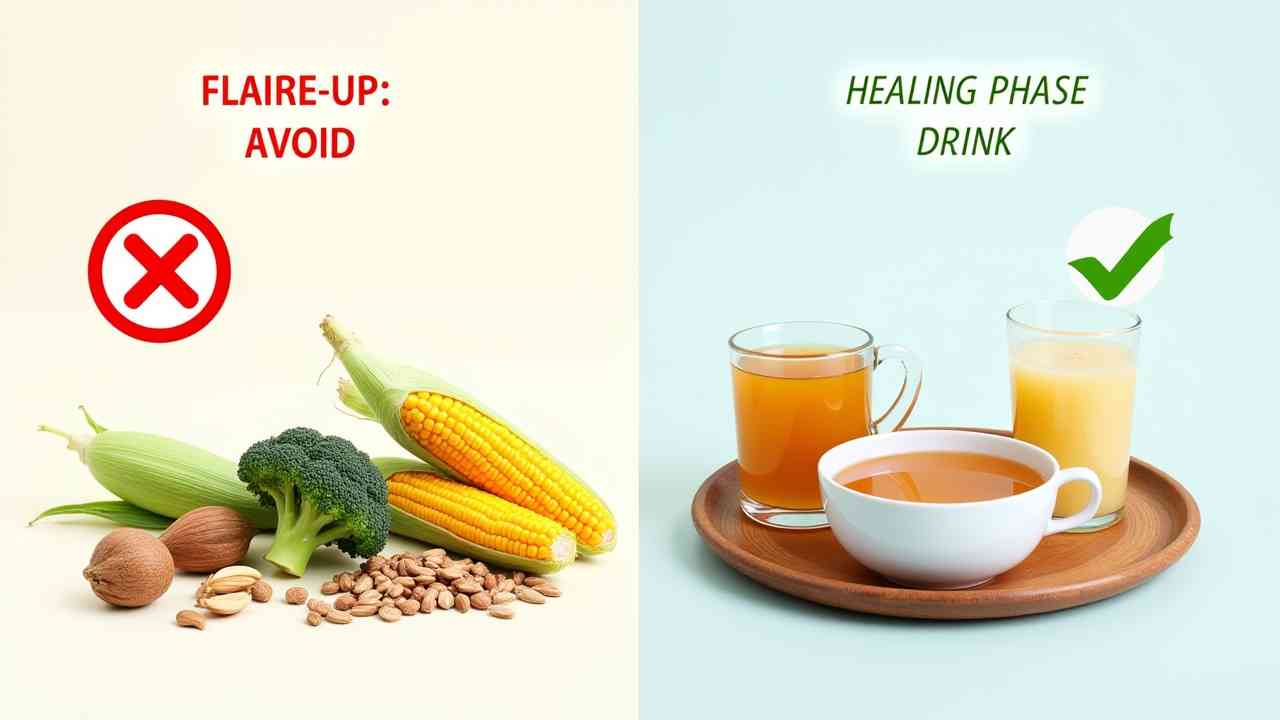
🩺 A Guide to the Liquid Diet for a Diverticulitis Flare-Up
🩺 A Medical Guide to the Liquid Diet for Diverticulitis Flares 🩺
❗ CRITICAL MEDICAL WARNING: Diverticulitis is a serious medical condition. The diet used during an acute flare-up is a temporary, medically supervised plan. You must only follow the specific instructions provided by your doctor or gastroenterologist. This guide is for informational purposes only and is not a substitute for professional medical care.
If you are experiencing the intense abdominal pain of a diverticulitis flare-up, your doctor's first instruction will likely be a dramatic change in your diet. This usually involves a short-term liquid diet for diverticulitis. This is the most important first step in calming your system down and allowing it to heal.
This guide will explain the purpose of this temporary diet, what it involves, and how you will transition back to solid foods. Let's get you on the path to recovery. ✅
🤔 Why is a Liquid Diet Prescribed for Diverticulitis?
Diverticulitis is the inflammation or infection of small pouches (diverticula) that can form in the wall of your colon. During a flare-up, your colon is angry and inflamed. The primary goal of a temporary liquid diet for diverticulitis is to give your colon a complete rest.
By consuming only clear liquids, you are minimizing the amount of digestive work your gut has to do. It also reduces the amount of residue passing through your colon, which helps to decrease inflammation and allow the infection to heal. It is a crucial part of the initial treatment, which often includes antibiotics.
- What Can You Have on a Clear Liquid Diet?
For the first few days of a flare-up, your doctor will place you on a strict clear liquid diet. This means you can only have liquids that you can see through. There should be no solid pieces of food at all. The approved list includes:
- Water
- Clear broth (chicken, beef, or vegetable)
- Pulp-free fruit juices (apple and white grape are good choices)
- Plain, sugar-free gelatin (Jell-O)
- Plain ice pops (with no fruit pieces or pulp)
- Clear, non-carbonated beverages
🚫 What Must You Absolutely AVOID?
During this phase, you must avoid all solid foods. You also need to avoid any liquids that are not clear. This includes:
- Milk and all dairy products
- Creamy soups
- Protein shakes and smoothies
- Juices with pulp, like orange juice
- What Happens After the Liquid Diet? The Transition Back
Once your symptoms start to improve, your doctor will slowly advance your diet. This is a gradual process. You will not go from liquids straight back to a normal diet. The next step is a low-fiber, low-residue diet.
This means you will start to eat simple, easy-to-digest foods like white bread, white rice, eggs, and well-cooked poultry. You will continue to avoid high-fiber foods like raw vegetables, nuts, and seeds for a few more weeks until you are fully healed.
⭐ The Long-Term Goal: A High-Fiber Diet for Prevention
This is a crucial point. While a low-fiber diet is essential for treating a flare-up, a high-fiber diet is the key to preventing future ones. Once you are fully recovered, your doctor will advise you to slowly increase your fiber intake. This helps to keep your colon healthy.
The cozy autumn season here in Bursa is a great time to enjoy a warm, comforting bowl of clear broth during your healing phase. Listen to your doctor, rest your gut, and you will be on the road to recovery. 🥣